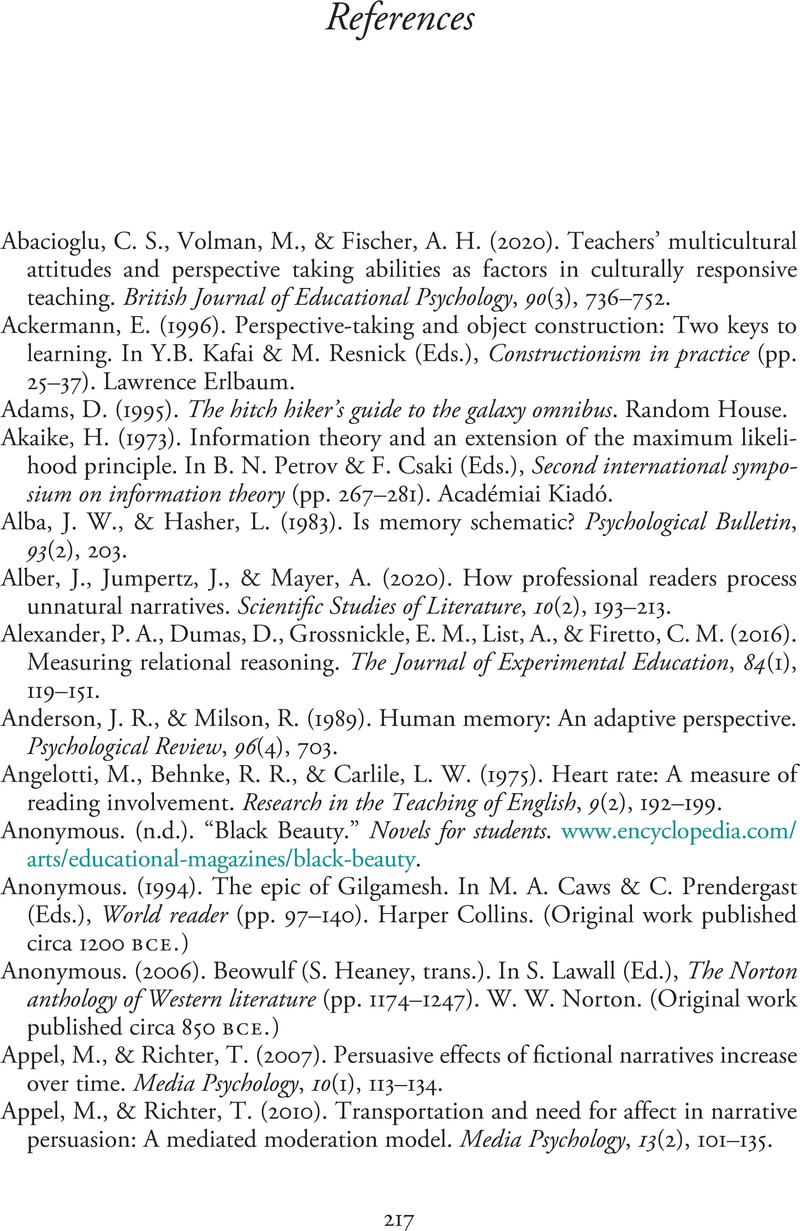Book contents
- The Analogical Reader
- The Analogical Reader
- Copyright page
- Dedication
- Contents
- Figures
- Tables
- Boxes
- Chapter 1 Introduction
- Chapter 2 An Analysis of Perspective and Perspective Taking
- Chapter 3 Perspective Taking in Life
- Chapter 4 Perspective Taking and Literature
- Chapter 5 Processing Components of Perspective Taking
- Chapter 6 Challenges to Perspective Taking
- Chapter 7 Evidence for Analogy in Perspective Taking
- Chapter 8 Conclusions
- References
- Index
- References
References
Published online by Cambridge University Press: 09 November 2023
- The Analogical Reader
- The Analogical Reader
- Copyright page
- Dedication
- Contents
- Figures
- Tables
- Boxes
- Chapter 1 Introduction
- Chapter 2 An Analysis of Perspective and Perspective Taking
- Chapter 3 Perspective Taking in Life
- Chapter 4 Perspective Taking and Literature
- Chapter 5 Processing Components of Perspective Taking
- Chapter 6 Challenges to Perspective Taking
- Chapter 7 Evidence for Analogy in Perspective Taking
- Chapter 8 Conclusions
- References
- Index
- References
Summary

- Type
- Chapter
- Information
- The Analogical ReaderA Cognitive Approach to Literary Perspective Taking, pp. 217 - 249Publisher: Cambridge University PressPrint publication year: 2023



